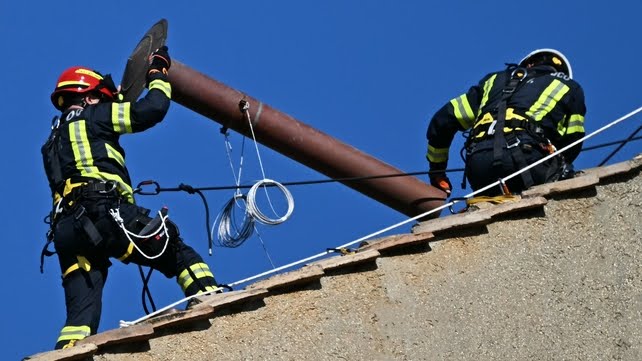The Vatican has hoisted the iconic conclave chimney atop the Sistine Chapel where 133 cardinals will gather to elect the successor to Pope Francis, who passed away on April 21 at age 88.
The installation of the conclave chimney, a rust-coloured pipe which is now visible from St. Peter’s Square, comes as preparation for the commencement of the papal conclave gears up.
The conclave chimney will emit black or white smoke to signal the outcome of the cardinals’ secret ballots.
The installation, carried out by the Vatican Fire Brigade, underscores the continuation of the conclave’s centuries-old tradition.
Black smoke, produced by burning ballots with chemicals like potassium perchlorate, indicates no candidate has secured the required two-thirds majority.
On the other hand, white smoke, created with potassium chlorate and other compounds, will announce the election of a new pope.
The white smoke signifies that the cardinals have been able to conclude the election of a new pope.
Aside from the installation of the conclave chimney, preparations are also going on inside the Sistine Chapel.
It was gathered that workers have installed a false floor to conceal security devices, set up wooden tables for voting, and added a ramp for accessibility.
The chapel closed to tourists since April 28, has been swept for listening devices to ensure the secrecy of the process.
Also, the upcoming conclave to elect the successor to Pope Francis will be the largest in the history of the Catholic Church, with 133 cardinal electors expected to gather in the Sistine Chapel on May 7, Vatican officials confirmed.
The unprecedented number surpasses all previous papal conclaves, breaking the previous record of 117 electors in the 2005 election. It also marks the first time a conclave will be held with more than 120 voting cardinals — the limit set by St. John Paul II in his 1996 apostolic constitution Universi Dominici Gregis.





